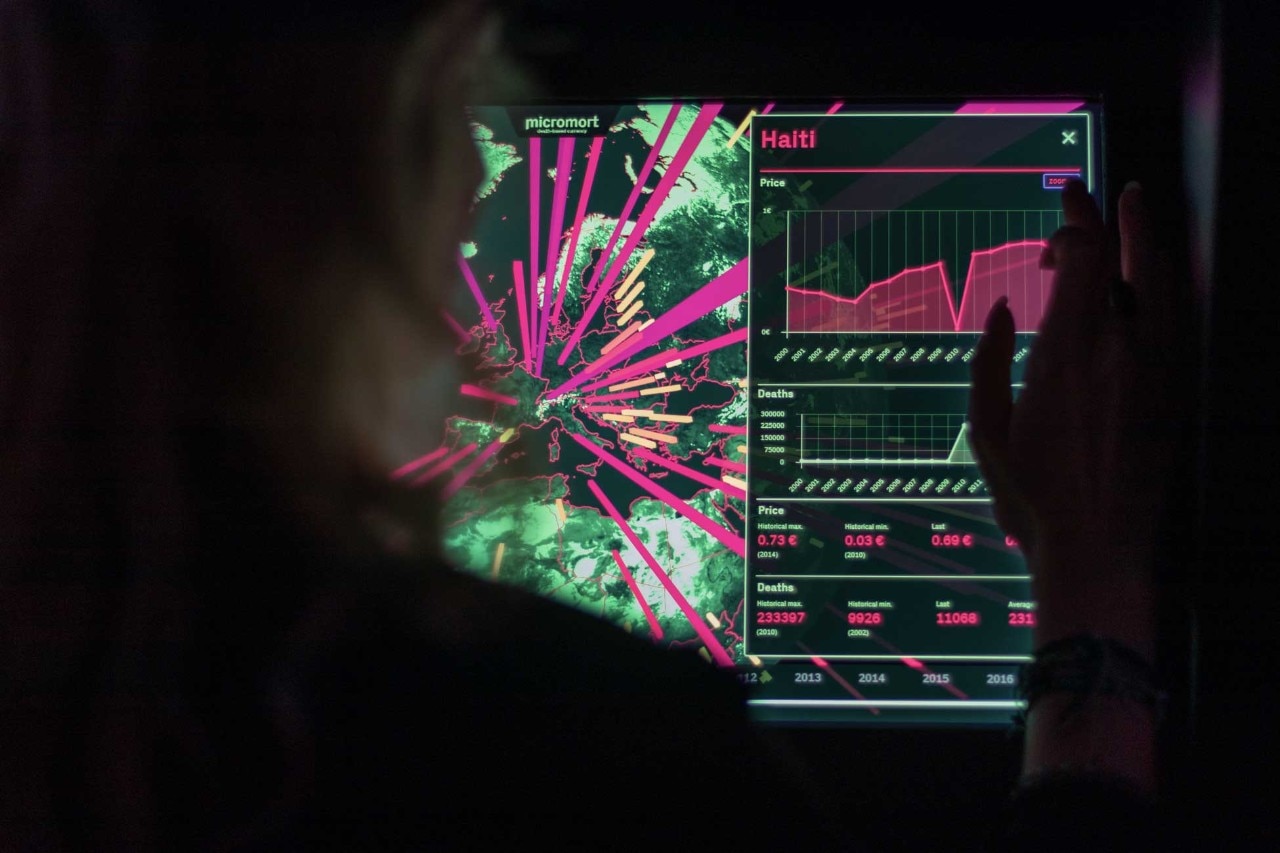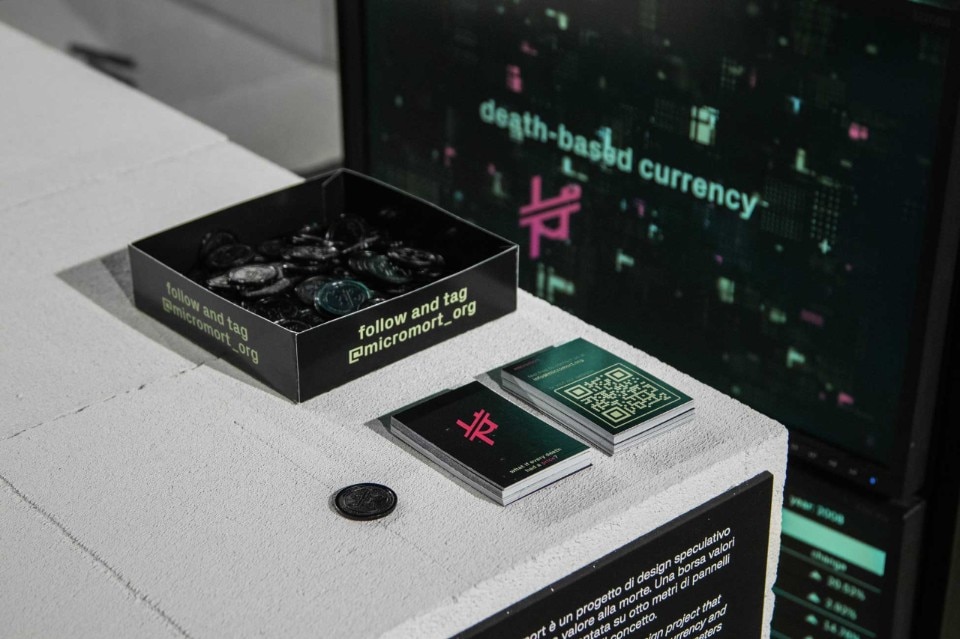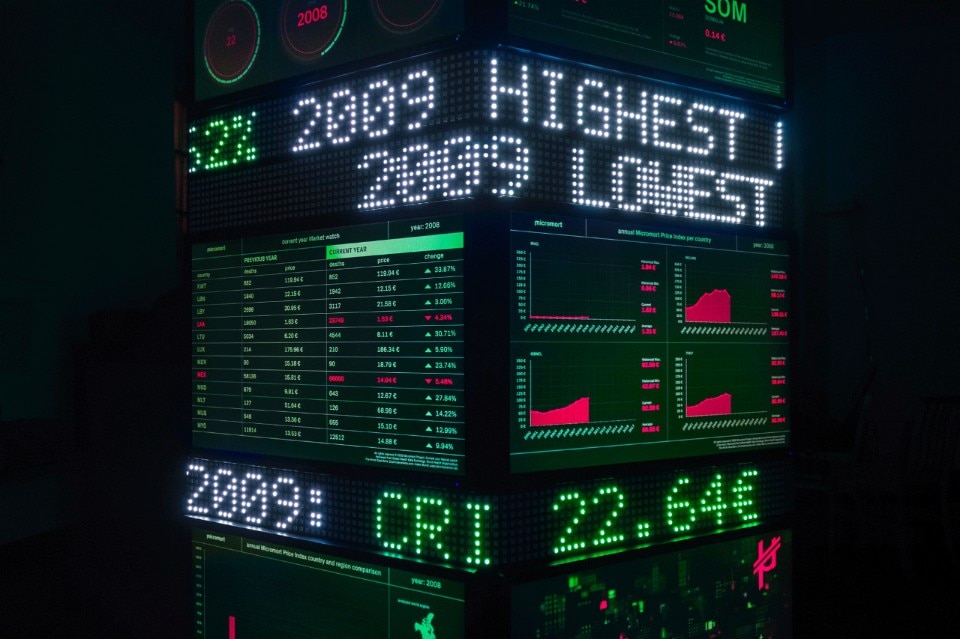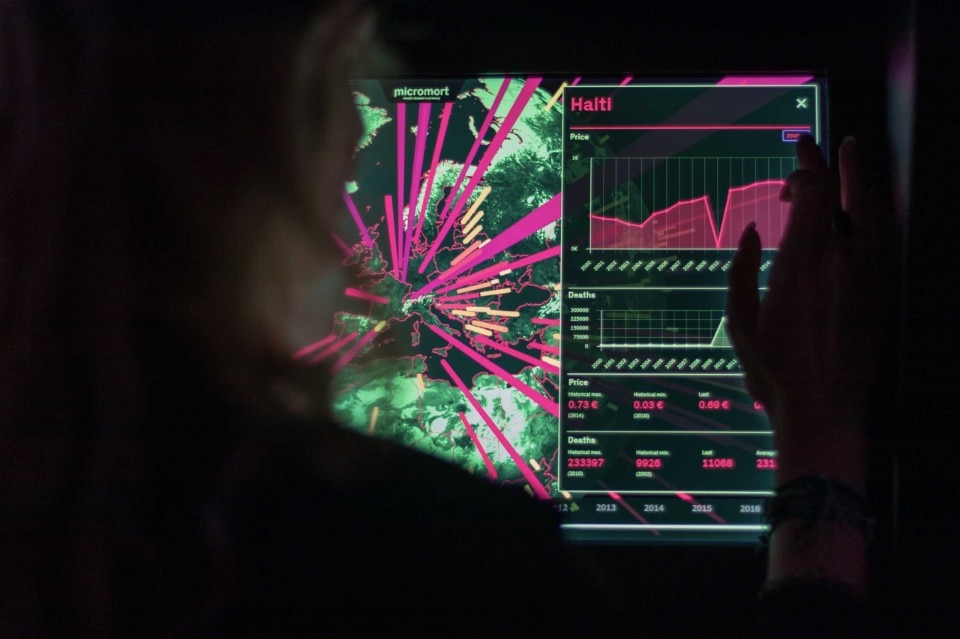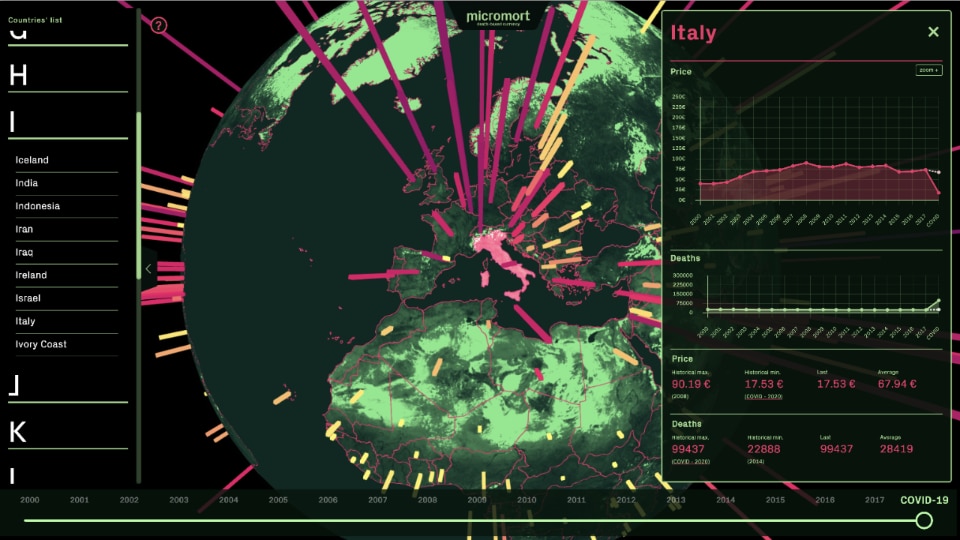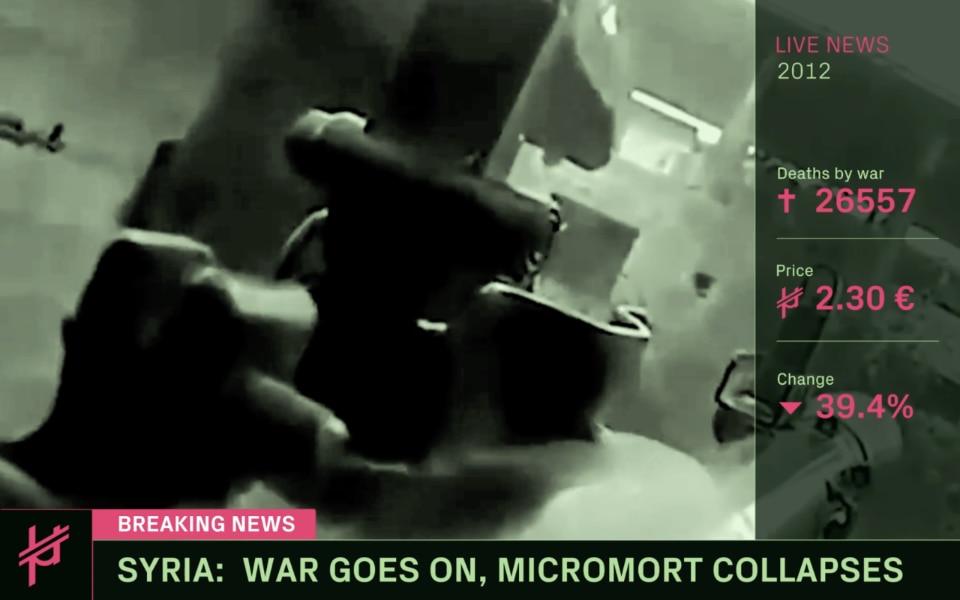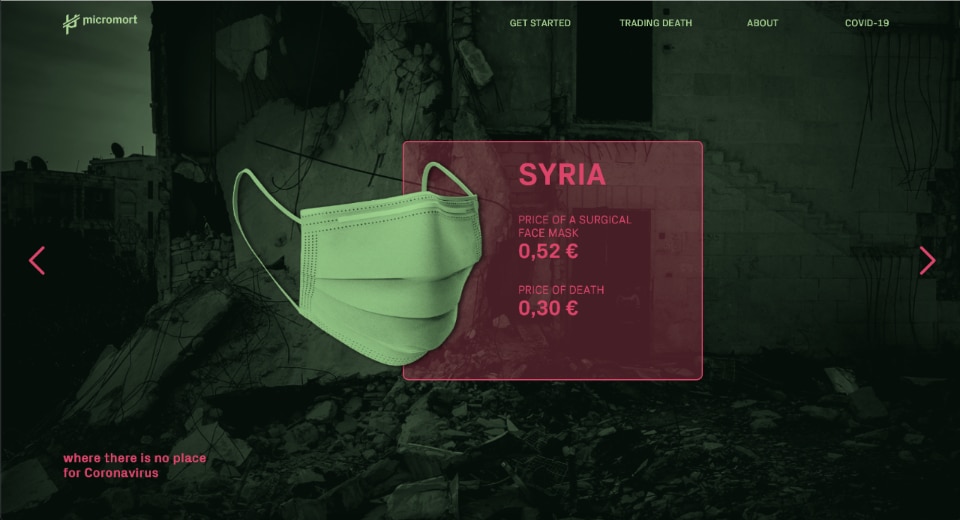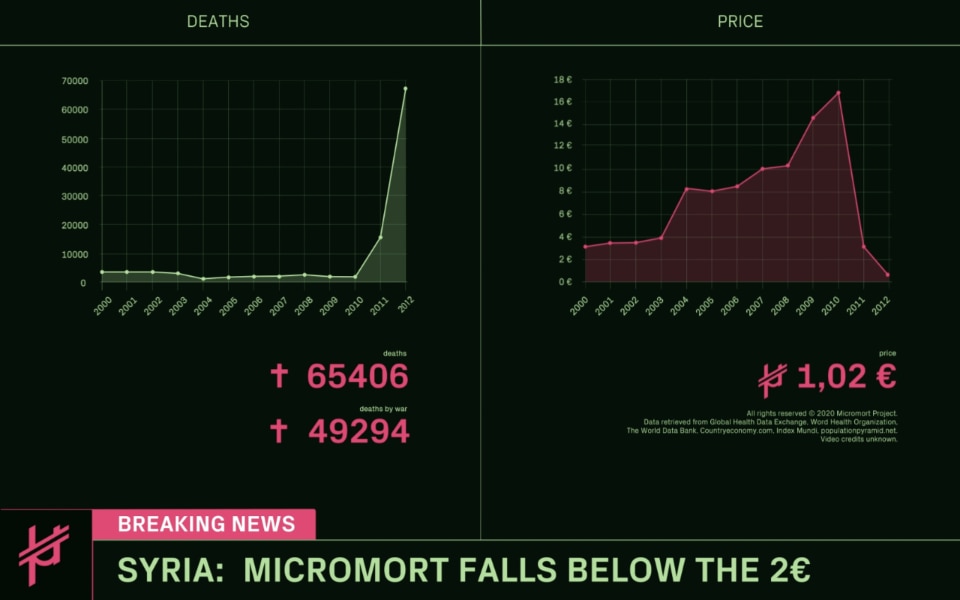Do you remember those mysterious monoliths that began to appear in the late 2020s, first in the Utah desert and then in various places around the world, from Romania to Holland and the Isle of Wight? In the same year, at the height of the pandemic, six students from Politecnico di Milano were also designing their own monolith during the final workshop of their third year of Communication Design. Their reflection, carried out in the context of Speculative Design, did not concern alien life forms or coded messages, but a theme that was tragically a lot closer to Milan at that time: death.
Micromort is an imaginary currency that assigns an economic value to accidental deaths in relation to the nationality of each victim. The team of six students decided to structure its speculation starting from Hades 2.0, a simple algorithm, designed especially, which takes into account “the number of deaths from non-natural causes in a given country, the GDP per capita and the total population of that country”, working with a very rich database, which draws from the public databases of organisations such as the World Health Organization or the World Data Bank, processing a total of 21,000 data points.
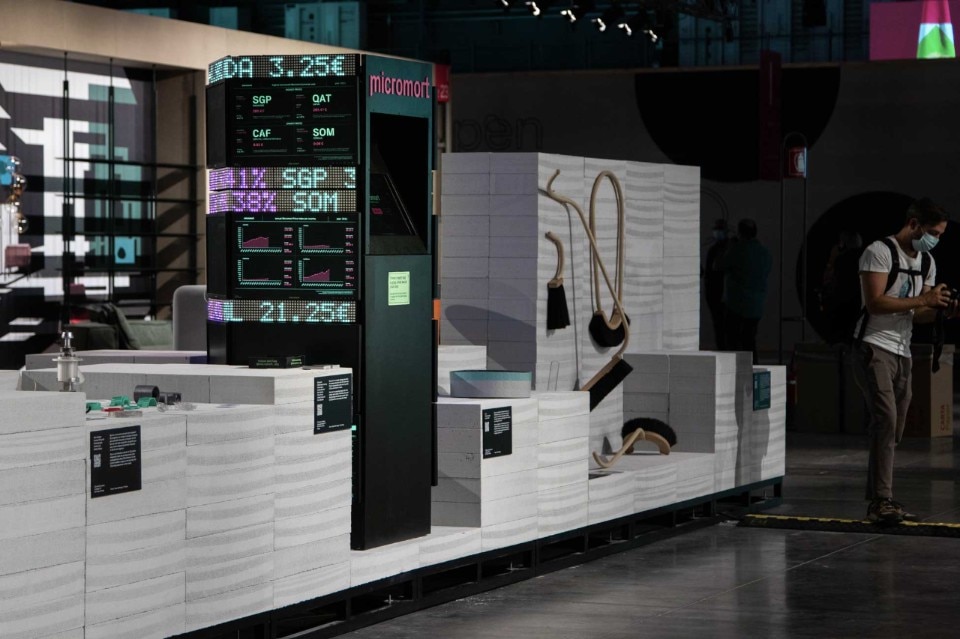
Rather than defining a value that must include an almost infinite number of variables, Micromort is to be understood as the starting point for the construction of a “communication machine” designed, programmed and built entirely by the six students: a “stock exchange monolith” consisting of 16 screens and 4 LED strips, coordinated by 4 Arduino boards, and a touch monitor through which visitors can consult a wide range of data displays and draw their own conclusions. How does the value of life change, or rather what is the price of death state by state? And how do factors such as media coverage or cultural and territorial proximity affect our perception of the value of catastrophes?
The aim of the workshop is to “create projects that go beyond the academic environment and resonate with a real audience”, and in fact the Micromort monolith was displayed during “The Lost Graduation Show”, one of the most eagerly awaited exhibitions at the Supersalone. As Giacomo Scandolara, one of the lecturers who supervises the projects together with Francesco Ermanno Guida, Pietro Buffa and Andrea Braccaloni, acknowledges, “exhibitions are very useful for stressing prototypes”.
In the presence of the monolith, between the writings scrolling on the LEDs and the video images from a series of sample events near and far, such as the attack on the Twin Towers (2001), the tsunami in Sri Lanka (2004), the earthquake in Haiti (2010), the civil wars in Libya (2011) and Syria (2012), the wars in Iraq (2014) and the Donbass (2015), and the terrorist massacre in Nice (2016), one actually gets a sense of how quickly and unexpectedly the price of death can vary, not only from state to state, but also from year to year.
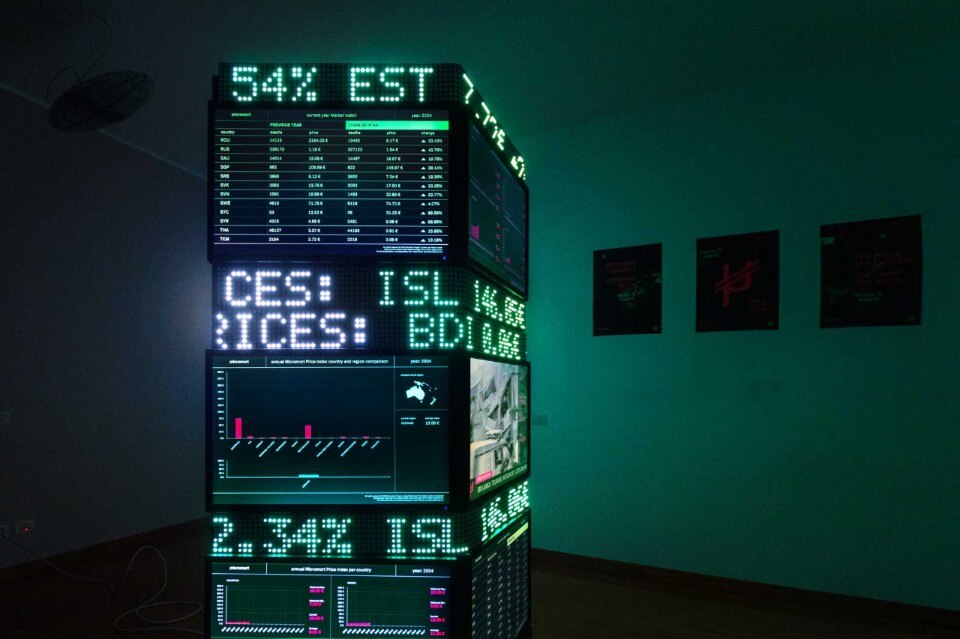
As the Micromort team was forced to acknowledge in the process: “when the project was conceived, Covid was still unheard of, yet the first thing we asked ourselves when the pandemic took hold was precisely how the price of death would change, and what impact Covid would have on the Micromort ecosystem”. Nothing could be more fitting at a time when governments found themselves literally finding a compromise between the level of economic activity, restrictions on social freedom and the number of deaths the state was willing to accept. In view of the climate catastrophe and the increasingly frequent extreme weather events, tools such as data visualisation and analysis, as well as their dissemination through experience design, could prove a useful contribution to a growing awareness that is now more necessary than ever.
For this reason, the Micromort team is open to future collaborations. One of the goals is to expand the monolith's capabilities by introducing the possibility of consulting “live data and real-time fluctuations”. The team would also like to make the project available to “data analysts, or experts who can enable us to discover data patterns that we haven't yet identified”. For anyone wishing to join the project, all developments will be made available at micromort.org.


